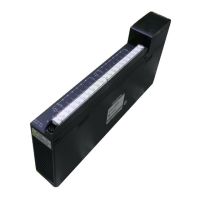Chapter 1. INTRODUCTION
1 - 3
1.2.3 Compensating Wire
This means a wire used to compensate error (temperature change) by the distance between terminal
of an input thermocouple and input terminal of a thermocouple input module. This has the
thermoelectromotive force characteristics between the two terminals under the temperature of 90 to
150 °C or less.
1.2.4 Thermocouple
If two different metals are joined and two different temperatures are applied to the two junctions, the
temperature difference generates a thermoelectromotive force between them and thermal current flows.
This effect called thermoelectric effect. Thermocouple is a temperature sensor using thermoelectric
effect. The magnitude of a thermoelectric force is determined by the type of junction metals and
temperature difference between two junctions, and the shape and dimensions of metals and
intermediate temperature change do not influence it.
1.2.5 Temperature Conversion Characteristics
The thermoelectromotive force to a temperature of a thermocouple has non-linear characteristics,
therefore, linear processing should be applied to a A/D conversion digital value and it will be output as
a detected temperature value.
1.2.6 Burn-out Detection
If a connected thermocouple or compensating wire has disconnection in some part of them, the internal
burn out circuit measures an out of range-voltage and then the thermocouple input module detects the
disconnection.
1.2.7 Reference Junction Compensation (RJC)
As the thermoelectromotive force table of various specifications has 0°C as its reference, the
difference between the present temperature at measuring point (input terminal) and the reference
temperature (0°C) should be compensated.

